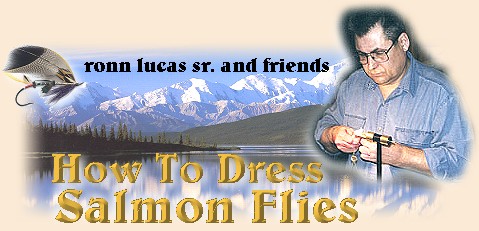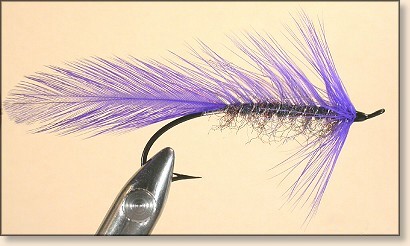
1. Taper the flat tinsel tag. Flat mylar tinsel
can be cut at an angle to provide a small tie in area
and that works well enough. There is another method
for achieving much the same thing. Pinch the flat
mylar tinsel with the thumbs and index fingers held
together close as you can get them. Stretch and break
the mylar. This will give you a tiny tapered bit of
tinsel to tie in as shown. The further away your
fingers are, the longer the tapered end will be.


2. Apply the tinsel tag.

3. Tie in the rib at about 5:30. Since we are doing
a dubbing body, you can trim the waste.

4. Dub the body ending well behind the eye.

5. Select two matching hackles either from the
middle of a cape or, one from each side. Place
the feathers concave sides together and strip
the bottom of them for the area that will be
resting on the body as shown. Cut the feathers
to length and cut the barbs at the tie in area.
This helps with the tie in. Tie in the wings
well behind the eye as shown.

6. Wrap the rib through the wings as shown. Use
a bodkin to move the barbs apart when you put each
turn of the rib down. Cut the waste end of the rib.

7. Fold a hackle and tie in by it's tip as shown.


8. Take three to five turns of hackle while pulling
each turn back. A folded hackle will usually lay with
the barbs facing rearward. Tie off the hackle with
two turns and cut waste end.

9. Apply head and finish the fly.



